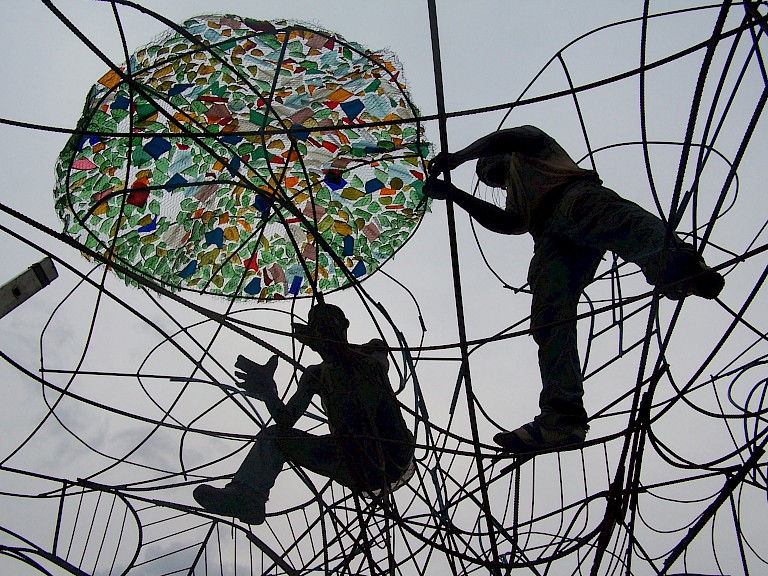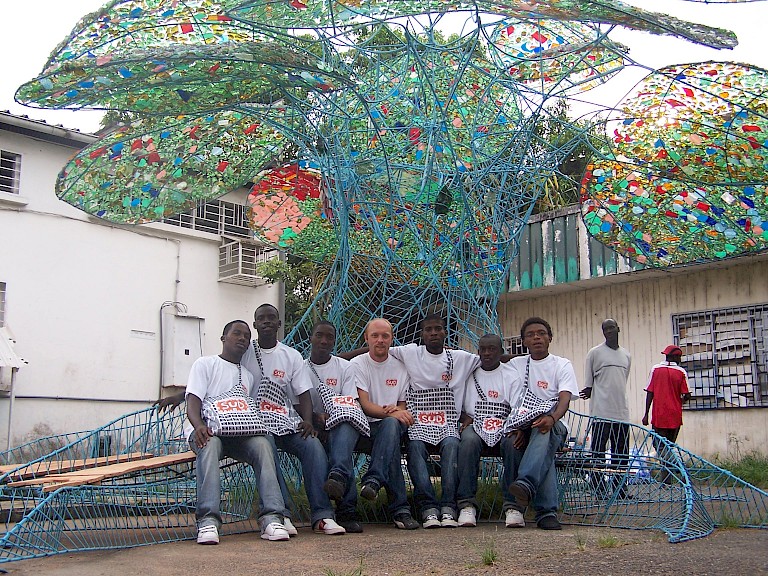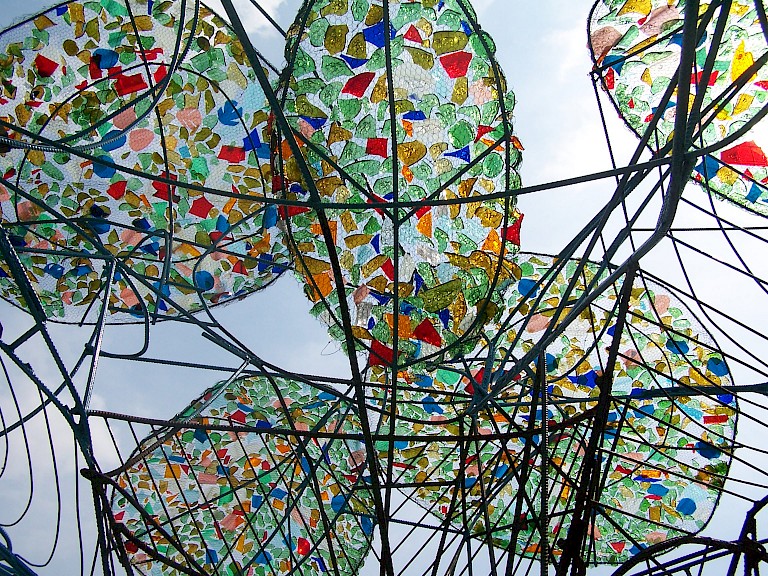



In African tradition a palaver tree is a natural gathering spot for community discussions, storytelling, problem solving, and festivals. Roughly equivalent to a civic plaza, zocalo, or agora, the palaver is a place for comfortable community engagement. Keiff understood that the loss of the tree contributed to the unraveling of the fabric of the community.
Palaver Tree is an artificial canopy made of recycled green and blue plastic pieces stitched together to resemble a quilt, lifted high overhead with a structural steel armature. Installed on the infrastructure of the art space, the sculptural tree inserted the cultural center into the community conversation. Thanks to the artist’s rigorous observation of public space, African culture, and human interaction made Palaver Tree’s execution most compelling. Building a new tree based on historic roots, the artist intentionally hired and trained unemployed young men on the streets of Douala to build community engagement.
The artwork taught valuable skills to the youth including welding, painting, and creatively responding to a site’s needs. Keiff granted official certificates to the men, recognizing their work, a valued credential in an area where primary schooling is for the upper classes. The men felt valued, and in turn valued their contribution. The artwork partnered with established, though marginalized, local businesses. Doualan recyclers supplied the iron, glass, and plastics needed for the project, keeping those materials out of landfills.
The project continues to impact the audience for whom it was created. The tree was completed for the Salon Urbain de Douala (SUD festival) in 2007. Officials past and current acknowledged the creation of the tree and the community effort. Enjoyment of the work continues in 2014. Using creative, social and political strategies, Keiff identified a suitable place where the roots of the tree would take a strong hold in the historical background and the urban life. This process has been long and painstaking, planting the seed of a work of art in the city’s social network.
Palaver Tree exceptionally addresses a community need with a creative solution. Honoring local traditions, employing local youth, repurposing recycled plastics, Palaver Tree made something beautiful, useful, engaging to the public, and transformative to the participants who created it. The artist successfully crossed cultural boundaries and honored the spirit and broadest purposes of public art. Keiff is a French artist working internationally and maintaining a studio near Strausborg, France. His practice is based on the human form and the built environment.
All copyright belongs to Shanghai Academy of Fine Arts, Shanghai University.



